UPSC Daily Current Affairs: 14 July 2024 | Current Affairs & Hindu Analysis: Daily, Weekly & Monthly PDF Download
GS3/Defence & Security
Militancy on the Rise in Jammu
Source: The Hindu
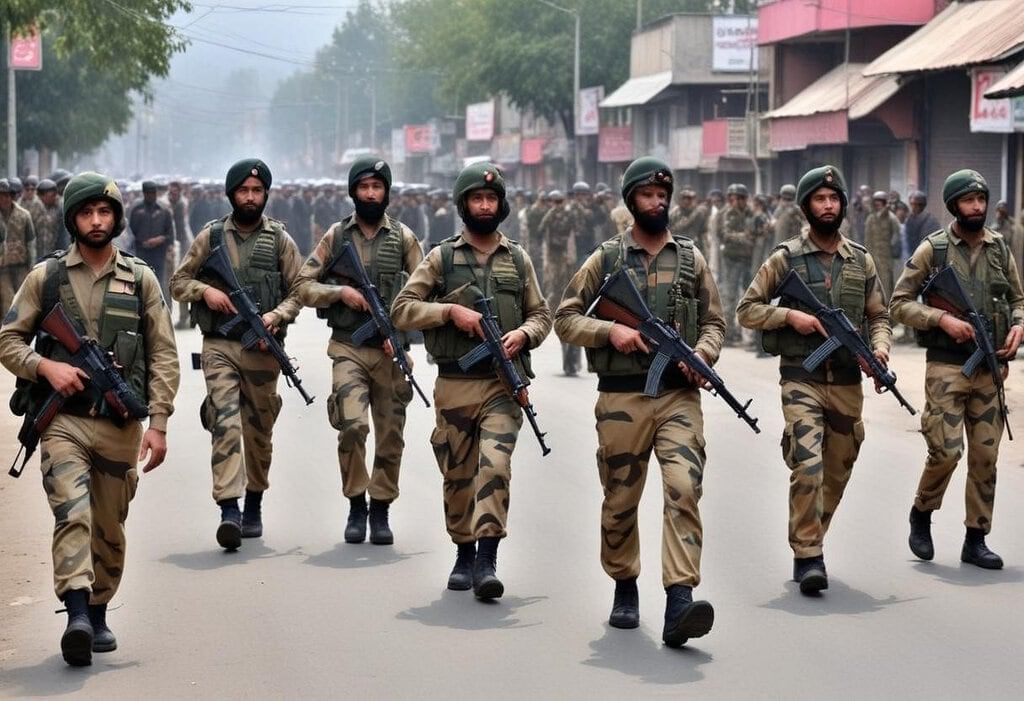
Why in news?
Recent terrorist attacks in the Kathua district of Jammu and Kashmir (J&K) highlight a significant challenge for the Indian government.
Attempts to revive militancy in the Jammu region since the past three years
- The recent attacks reflect a concerning pattern of renewed militancy in the Jammu region over the past three years, particularly in the Chenab Valley and south of the Pir Panjal.
- Districts such as Doda, Kishtwar, Ramban, Kathua, Udhampur, Reasi, Rajouri, and Poonch have seen a resurgence in militant activity.
- While the Kashmir Valley has historically experienced frequent terror incidents,
- The Jammu belt has been relatively peaceful for the past two decades
This revival of militancy in an area that was a hotbed in the late 1990s and early 2000s has alarmed the security establishment.
Statistics
- Since 2021, the Jammu region has experienced 31 terror incidents, resulting in the deaths of 47 security forces and 19 civilians, along with 48 terrorists killed.
- In contrast, the Kashmir Valley has reported 263 terror incidents, with 68 security forces and 75 civilians killed, and 417 terrorists neutralized.
- While the number of incidents in Jammu is significantly lower than in the Valley, the increased frequency and targeted nature of attacks on pilgrims and security forces in Jammu are particularly concerning.
How is the infiltration happening?
- The 192-km international border (IB) along Jammu is secured by the Border Security Force (BSF), while the 740-km Line of Control (LoC) in the Kashmir Valley and parts of Jammu is under Army control.
- Despite security measures, tough terrain, forested areas along the LoC, and vulnerable patches along the IB may have facilitated fresh infiltration.
- The recent attacks in the Kathua belt, including the July 8 ambush, occurred on an old infiltration route used by militants two decades ago.
Thinning of the security grid after Galwan incident
- After the 2020 Galwan clashes in eastern Ladakh, which resulted in the deaths of 20 soldiers, a significant number of Army personnel were redeployed from Jammu to the China border, weakening the security grid in Jammu.
- Security experts suggest that this has made the region more vulnerable to attacks.
India is being engaged at two fronts
- Hostile elements aim to strain India on both the western (Pakistan) and northern (China) fronts.
- With heightened alert in the Kashmir Valley and reduced opportunities for state-sponsored terrorists there, Jammu, with its lowered guard, becomes a more convenient target.
Aftermath of the abrogation of Article 370
- Following the abrogation of Article 370 in August 2019, the government has touted successes in the Kashmir Valley, evidenced by zero stone-throwing incidents, no strikes, and a tourism boom.
- However, renewed terrorism in Jammu challenges this narrative and might aim to stabilize militant presence in the Valley while stirring insecurity in Jammu.
Demography of the region
- The area's demography also raises concerns about potential communal tensions and social unrest due to these attacks.
Opportunities for terrorists in Jammu region
- The Rajouri-Poonch area had a thinner concentration of security forces.
- This region is equidistant from Shopian and Kulgam in Kashmir, and the Line of Control with Pakistan,
- Making it easier to move between the three regions
- It was highly unlikely that security forces and police from all three regions would simultaneously launch an operation against the militants.
Areas in the Pir Panjal range and to its south are also easier to access
- Any militant crossing over from the lower heights of Jammu have to traverse through multiple high ranges like Pir Panjal before they reach Kashmir Valley.
- This challenges their logistical preparations and motivation.
- Hence shorter and intense contacts have become the norm in the Jammu region
- Terror incidents away from the Valley, where militant ranks have been staring at a leadership vacuum, are high visibility strikes, intended to inflict maximum damage.
Drying up of the human intelligence
- One of the reasons why forces may have not been able to anticipate the attacks is the
- Drying up of the human intelligence or their network of informers
- Human intelligence is very important in counter-insurgency operations.
- Even with all their reliance on gadgets and smart ways to avoid surveillance, the terrorists visit the nearest human settlement in order to get logistical support for their survival.
This is where the role of human intelligence becomes important.
- While militants and their network of overground workers continue to exist, the informers are missing.
- Many security experts attribute the dried-up human intelligence to
- Authorities taking the prevailing peace for granted
- As per them, the new officers who got transferred to the region didn’t work as hard as they should have on their informer network.
A whole generation that fought the terrorists are in their 60s and 70s now. There is no such connect with the younger generation, it will take time to build that trust with the civilians.
The Village Defence Guards/Committees (VDGs) are also being revived since December 2022.
- The VDGs had to be discontinued amid allegations of crimes such as abduction and rape committed by the members.
GS2/Polity
Powers of Chief Information Commission
Source: Live Law
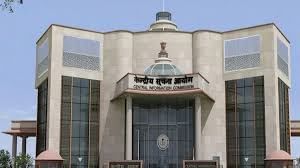
Why in news?
The Central Information Commission has powers to constitute benches and frame regulations, the Supreme Court has said while observing that the autonomy of CIC is of paramount importance for its effective functioning.
About CIC (Objective, Structure, Tenure, Functions, Powers, etc.)
About Chief Information Commission (CIC):
- The Chief Information Commission of India is a statutory body that plays a crucial role in ensuring transparency and accountability in the functioning of the government.
- It was established under the Right to Information Act (RTI) of 2005, which empowers citizens to request information from public authorities to promote openness and curb corruption.
Key Features:
- Establishment and Structure:
- The CIC is constituted by the Central Government and consists of the Chief Information Commissioner and up to ten Information Commissioners.
- Appointment:
- The Chief Information Commissioner and Information Commissioners are appointed by the President of India based on the recommendations of a committee consisting of:
- Prime Minister,
- Leader of the Opposition in the Lok Sabha, and
- Union Cabinet Minister nominated by the Prime Minister.
- The Chief Information Commissioner and Information Commissioners are appointed by the President of India based on the recommendations of a committee consisting of:
- Tenure:
- The Chief Information Commissioner and Information Commissioners hold office for a term of up to five years or until they reach the age of 65, whichever is earlier.
- Functions and Powers:
- Adjudication: The CIC acts as a quasi-judicial body that hears appeals and complaints regarding the RTI Act. It has the power to order public authorities to provide information, impose penalties on erring officials, and ensure compliance with the RTI Act.
- Advisory Role: The Commission advises public authorities on implementing and following the RTI Act effectively.
- Promotion of RTI: It conducts programs to promote transparency and educate citizens about their right to information.
- Appeal and Complaint Mechanism: Citizens who are not satisfied with the response from a Public Information Officer (PIO) can file an appeal with the First Appellate Authority. If still unsatisfied, they can approach the CIC for a final appeal or lodge a complaint.
- Public Authorities' Compliance: All public authorities are required to appoint PIOs and provide information to applicants within 30 days. The CIC ensures that these authorities comply with the provisions of the RTI Act.
- Significance of the CIC:
- Enhancing Transparency: The CIC plays a pivotal role in promoting transparency in government operations, making information accessible to the public.
- Empowering Citizens: It empowers citizens by providing them with the tools to seek information and hold the government accountable.
- Curbing Corruption: By ensuring that information is accessible, the CIC helps in reducing corruption and improving governance.
- Powers of Chief Information Commission:
- The Supreme Court of India has affirmed that the Chief Information Commissioner (CIC) has the authority to form benches and establish regulations to effectively manage the Central Information Commission under the Right to Information (RTI) Act, 2005.
- This decision overturns a previous Delhi High Court ruling which had limited the CIC's powers.
- The Supreme Court emphasized that administrative bodies need autonomy to set and implement internal procedures without restrictive interpretations that could undermine their functions.
- The Supreme Court advocated for a broader interpretation of the RTI Act, aligning with its goals of promoting transparency and accountability in public authorities.
- The court noted that the CIC's regulations, regardless of their nomenclature, are essential for the effective management of its affairs and must be respected to maintain the Commission's autonomy.
- This ruling underscores the importance of the CIC's independence in handling the high volume of RTI cases and ensures that it can operate without undue external interference.
GS2/International Relations
India-Russia Trade Gap and Rupee Internationalization Efforts
Source: Indian Express
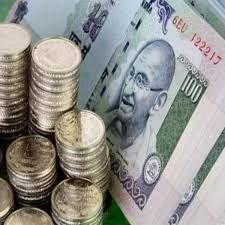
Why in news?
New Delhi aims to enhance bilateral trade with Moscow to $100 billion by 2030 to curb its rising oil import bill and reduce dependence on the US dollar. However, since the Ukraine war in 2022, India-Russia trade dynamics have become skewed. Russia is now India's top oil supplier, but Indian exports to Russia have lagged, leading to a $57 billion trade deficit out of a $66 billion bilateral trade in FY24. While India has saved over $10 billion by importing cheaper Russian oil and benefited from exporting petroleum products made from Urals crude, the low exports to Russia have hindered India's goal to reduce dependence on the US dollar. Continued unbalanced trade might compel India to use the Chinese yuan, undermining efforts to internationalize the rupee.
About
Internationalisation of the rupee is a process that involves increasing use of the local currency in cross-border transactions. Basically, it is a process of promoting and increasing the use of the INR as a widely accepted currency for international transactions and investments. It involves enhancing the currency's acceptance, liquidity, and usability in global markets.
Steps taken to promote international trade settlement in rupees
- In July 2022, the RBI has provided an additional arrangement for invoicing, payment, and settlement of exports/imports in the rupee.
- As part of this mechanism, in December 2022, India saw its first settlement of foreign trade in rupee with Russia.
- So far banks of 19 countries including the UK, New Zealand, Germany, Malaysia, Israel, and the United Arab Emirates have been permitted to make settlements in rupees.
How can India internationalise the rupee?
- The FY23 Economic Survey highlights that a prerequisite for an international currency is its increasing use for trade invoicing.
- The BIS Triennial Central Bank Survey 2022 shows the US dollar as the dominant currency, making up 88% of global forex turnover, while the rupee accounts for only 1.6%.
- The survey suggests that if the rupee's turnover reaches 4%—the share of non-US, non-Euro currencies in global forex turnover—it will be considered an international currency.
- China's example
- China has capitalized on export opportunities in Russia amid Western sanctions and the exit of Western companies, with Chinese exports to Russia growing faster than imports of Russian oil.
- In 2023, Chinese shipments to Russia increased by 47% year-on-year to $111 billion, while imports grew by 13% to $129 billion, leading to a record two-way trade of $240 billion.
- This balanced trade has encouraged the use of domestic currencies, with 95% of China-Russia trade occurring in local currencies.
- Challenges faced
- The primary challenge in facilitating trade with Russia is the reluctance of private banks to engage due to fears of Western sanctions, as many have significant business interests and branches in Western countries.
- Indian exporters are also facing difficulties using the rupee settlement mechanism while trading with Russia.
- Exporters initially complained that although the RBI had launched the mechanism, they were unable to use it due to the absence of a Standard Operating Procedure (SOP) for banks.
- Additionally, the volatility of the ruble and rupee, unlike the more stable yuan, further complicates trade in domestic currencies.
- Recent developments
- During the recent visit of PM Modi, India and Russia agreed to eliminate trade barriers and initiate negotiations for a trade deal with the Russia-led Eurasian Economic Union (EEU), which includes Russia, Belarus, Kazakhstan, Kyrgyzstan, and Armenia, representing a $5 trillion economy.
- They decided to cooperate in manufacturing sectors such as transport engineering, metallurgy, and chemicals, and to implement joint projects in priority areas.
- The aim is to expand reciprocal trade flows of industrial products to increase their share in bilateral trade.
- Discussions also covered a migration and mobility partnership agreement between the two countries.
GS2/Polity
Guidelines to Prevent Stereotyping and Discrimination of PwDs
Source: The Hindu
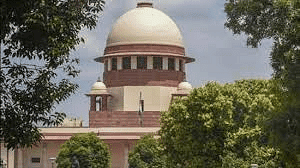
Why in news?
The Supreme Court in a landmark ruling laid down comprehensive guidelines to prevent stereotyping and discrimination of persons with disabilities (PwDs) in visual media, including films and documentaries.
- The SC issued guidelines while hearing a plea to ban the film Aaankh Micholi for derogatory portrayal of PwDs. However, the SC refused to interfere with CBFC's decision to clear movie for public screening.
What is the SC's Ruling Against the Insensitive Representation of PwDs?
- The Supreme Court provided guidelines to prevent stereotyping and discrimination of persons with disabilities in visual media.
- The ruling emphasized the need for authentic and respectful representation of individuals with disabilities.
What is the Significance of the Ruling?
- The ruling highlights the importance of inclusivity and realism in cinematic portrayals.
- Creative freedom should not include the freedom to lampoon, stereotype, misrepresent, or disparage marginalized groups.
What are the Shortcomings of the Ruling?
- There may be challenges in implementing the ruling in practice.
- Some may argue that the ruling infringes on creative freedom.
Way Forward - 7-Points Guidelines to Prevent Stereotyping and Discrimination of PwDs
- The guidelines emphasize the importance of accurate representation of PwDs in visual media.
- Filmmakers are expected to adhere to the 7-point guidelines provided by the SC.
The 7-point guidelines include:
- Avoiding words that lead to institutional discrimination and negative self-image.
- Avoiding language that overlooks social barriers.
- Checking for adequate medical information about impairments.
- Practicing the principle of "nothing about us, without us" by involving PwDs in content creation.
- Consulting rights advocacy groups before portraying PwDs in visual media.
- Providing training and sensitization programs for creators.
GS-I/History and Culture
Ahom ‘Moidams’
Source: The Hindu

Why in News?
Recently, the Ahom era ‘Moidams’ in Assam’s Charaideo district, were recommended for UNESCO World Heritage status.
Ahom 'Moidams' - Simple Explanation
What are Moidams?
- Ancient burial mounds from the Ahom Dynasty in Assam, India.
- Final resting places for Ahom royalty.
- Contain remains and treasured belongings of the royalty.
Charaideo Necropolis:
- Pyramid-like structures on elevated land.
- Tell the story of Ahom royalty, their history, and legacies.
UNESCO Recommendation:
- The International Council on Monuments and Sites (ICOMOS) advised adding Ahom Moidams to the UNESCO World Heritage List.
- ICOMOS reviewed 36 global nominations, including 19 new ones. Ahom Moidams were India's only entry.
- This is an important step for UNESCO recognition.
Why Were They Recommended?
- Criterion (III): Moidams show the exceptional cultural traditions and civilization of the Ahom people, which have evolved and disappeared over time.
- Criterion (IV): They are outstanding examples of mound-burial architecture, representing important stages in human history.
GS-II/International Relations
India Seizes Pak-bound Consignment of Banned Chemicals
Source: Business Standard
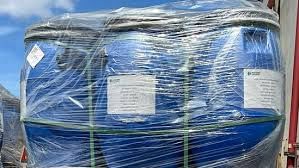
Why in News?
India has seized Pakistan-bound consignment, consisting of internationally banned chemicals used for tear gas and riot control agents, from China at a port in Tamil Nadu.
Chemical Shipment Incident
Incident:
- A Chinese company shipped a chemical called "Ortho-Chloro Benzylidene Malononitrile" (CS) to Pakistan.
- The shipment was seized under the Customs Act, 1962, and the Weapons of Mass Destruction and Delivery Systems (Prohibition of Unlawful Activities) Act, 2005.
About Ortho-Chloro Benzylidene Malononitrile (CS):
- CS is listed under the Wassenaar Arrangement.
- India is part of the Wassenaar Arrangement; China and Pakistan are not.
Multilateral Export Control Regimes
Wassenaar Arrangement (1996):
- Focuses on conventional weapons and dual-use goods and technologies (civilian and military uses).
- Establishes export control lists for member countries.
Nuclear Suppliers Group (1974):
- Prevents nuclear proliferation by controlling the export of nuclear-related materials, equipment, and technology.
Australia Group (1985):
- Formed in response to Iraq’s use of chemical weapons during the Iran-Iraq War.
- Promotes harmonized international export controls on chemical weapons precursor chemicals.
Missile Technology Control Regime (1987):
- Limits the proliferation of missiles and unmanned aerial vehicles that can deliver weapons of mass destruction.
- India joined this regime in 2016.
GS-III/Science and Technology
Time Crystal
Source: Science Alert

Why in News?
Physicists have created ‘Impossible’ Time Crystal by Blasting Atoms Into Balloons.
Time Crystals from Rubidium Atoms
- Experiment:
- Physicists used lasers to excite rubidium atoms into a "puffy" Rydberg state.
- This created a time crystal, an exotic state of matter.
- The experiment was conducted with rubidium atoms in a glass container at room temperature.
- About Time Crystals:
- First proposed in 2012 by Nobel laureate physicist Frank Wilczek.
- Time crystals are groups of particles that repeat in time, similar to how ordinary crystals (like salt or diamonds) repeat in space.
- Significance:
- Provides a new method to study the properties of time crystals.
- Helps explore phenomena such as quantum fluctuations, correlation, and synchronization.
- Important for the development of quantum computers.
GS-III/Science and Technology
NASA's CHAPEA Project
Source: Times of India

Why in News?
After a year-long simulated Mars mission as part of the CHAPEA project, a NASA crew emerged from their 17,000 sq ft habitat at Johnson Space Centre.
NASA's CHAPEA Project
What is CHAPEA?
- CHAPEA stands for Crew Health and Performance Exploration Analog.
- It is a series of NASA missions simulating year-long stays on Mars.
Purpose:
- To gather data on NASA's food system and human health patterns.
- This data will aid future space missions.
Mission Details:
- Each mission involves four crew members.
- They will live in Mars Dune Alpha, a 1,700-square-foot habitat.
- Located at Johnson Space Center in Houston, Texas.
- Mars Dune Alpha is a 3D-printed structure simulating a realistic Mars habitat.
Mars Dune Alpha Features:
- Four private crew quarters.
- Dedicated workstations and medical station.
- Common lounge areas.
- Galley and food-growing stations.
Mission Conditions:
- The simulation includes environmental stressors like resource limitations, isolation, equipment failure, and heavy workloads.
- Crew members will perform simulated spacewalks and collect data on physical and behavioral health and performance.
Future Plans:
- After the recent successful mission, two more missions are planned for 2025 and 2026.
|
38 videos|5293 docs|1118 tests
|
FAQs on UPSC Daily Current Affairs: 14 July 2024 - Current Affairs & Hindu Analysis: Daily, Weekly & Monthly
| 1. What is the current status of militancy in Jammu? |  |
| 2. What are the powers of the Chief Information Commission mentioned in the article? |  |
| 3. How is India addressing the trade gap with Russia and what efforts are being made for rupee internationalization? |  |
| 4. What guidelines are provided to prevent stereotyping and discrimination of Persons with Disabilities (PwDs) in the article? |  |
| 5. What are Ahom 'Moidams' and why are they mentioned in the article? |  |





















